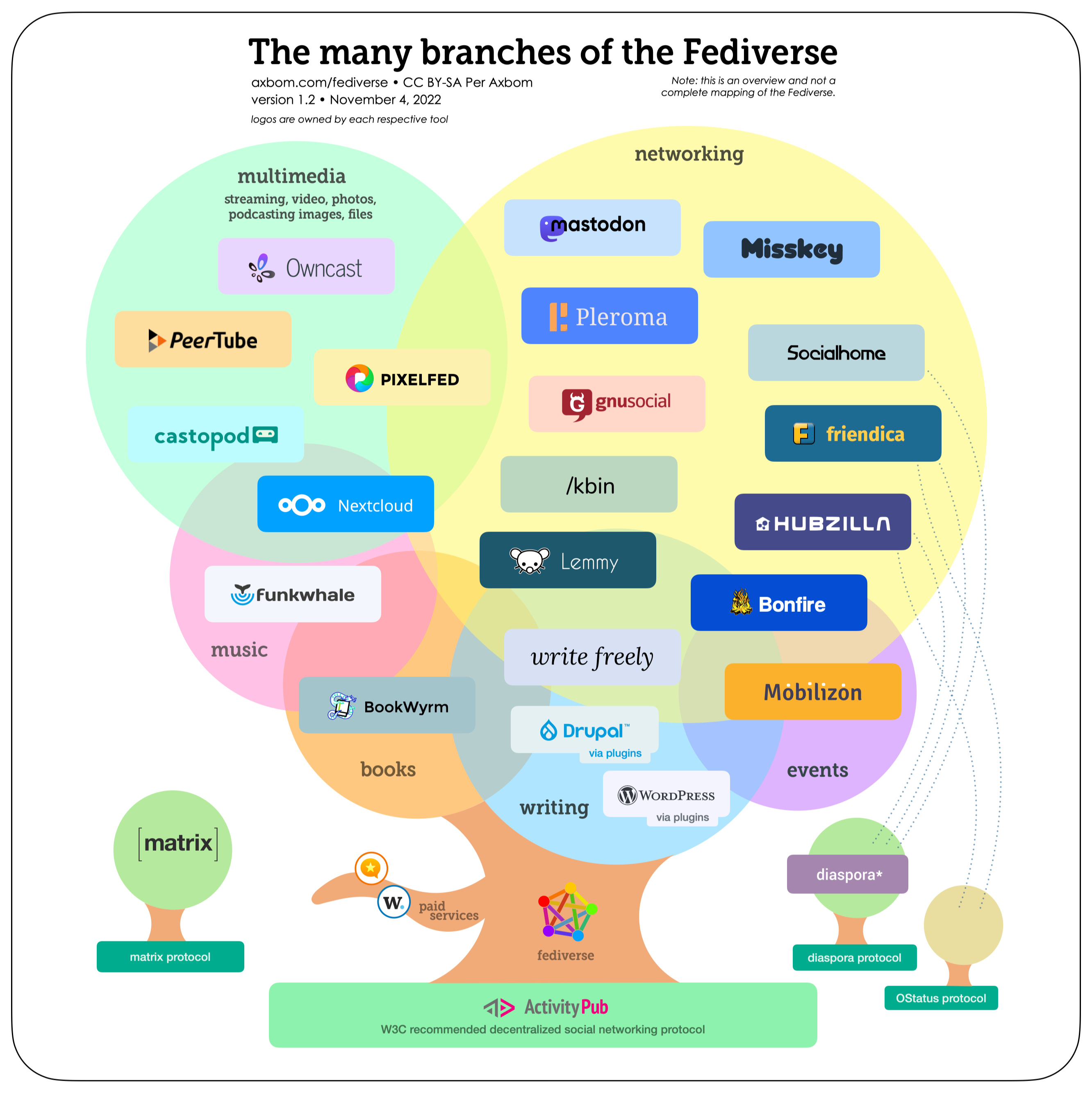

you’re welcome!


you’re welcome!


Blocking a somewhat fluctuating list of 25k+ instances is still considerably harder than blocking a pretty stable infrastructure of a single major social media platform.


I still think that fedi will help, and in fact I am pretty sure it is helping already, simply because it is quite decentralized. Blocking 20k+ instances is not trivial. And each of these instances is an entrypoint, so to speak, into the broader fedi. Missing even one is thus a big deal. If my instance is blocked, I can set up an account on a different one, follow the same people, and I am back in business.
At the same time all these instances are run independently. One can’t simply threaten the whole fedi to force it to do a thing (say, take down an account), this just does not make sense.
Compare and contrast with centralized services like Facebook, gatekeepers like Cloudflare, and so on. Threatening one big entity with problems might be enough to “convince it” to take a thing down.
The reason governments and other powerful entities are able to control the information flow is because there are these hugely important single points of failure. Fedi is not perfect (mastodon.social is way too big for its own good…), but it is a step in the right direction.
HAproxy cannot serve static files directly. You need a webserver behind it for that.
Apache is slow.
Nginx is both a capable, fast reverse-proxy, and a capable, fast webserver. It can do everything HAproxy does, and what Apache does, and more.
I am not saying it is absolutely best for every use-case, but this flexibility is a large part of why I use it in my infra (nad have been using it for a decade).


What absolute bull. 🤦


fixed again. jeebus.


Updated with a new link from EBU.


Meanwhile, Threadiverse is on the verge of reaching 100k active monthly accounts.
Of course, the numbers are incomparable. But this whole thing made Threadiverse into a viable space for a lot of people. Reddit app developers are starting to develop apps for Lemmy/Kbin. Dozens of new instances got set up. The whole space is bigger, more resilient, and leaps and bounds more vibrant than it was in May and before (I’ve been here for years).
A lot of people will come back to Reddit. But a lot of people will also remain here. And this space will be there the next time Reddit craps the bed, better prepared to take the influx.
These are just two different software projects that a Threadiverse instance can use. They federate with one another, so it doesn’t matter all that much if you have an account on a Kbin instance, or a Lemmy instance. The differences are in the interface, some functionality, and the tech stack used (Lemmy is written in Rust; Kbin in PHP).
There are 100+ instances of Lemmy, and ~10 instances of Kbin. Kbin is a much younger project (hence it might get missed), and it’s main instance, kbin.social seems to be experiencing more issues with the wave of new registrations. If you want to try Kbin, https://fedia.io/ might be a good instance to check out.


I don’t think you need to worry about it. It’s up to a given community whether or not that baggage affects it or not, I think. Building communities that are very explicitly not tankie is a great way of helping overcome that baggage for the whole project.
Yup. The problem is that these users will have trouble understanding how can it be “Mastodon” without being Mastodon, if you get my drift. Plus, ideally this would also be done by Mastodon-the-software project — “if you want functionality X, check out instances of this compatible-but-different software project.”
But absolutely, doing so yourself in such cases makes perfect sense.


This will help:

The source is well-worth visiting and taking the time to read, plenty of additional info!
thanks, I should have provided that link.